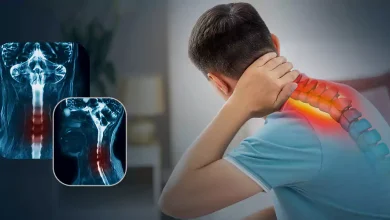What is Primary Biliary Cirrhosis?

Primary biliary cirrhosis also known as primary biliary cholangitis is a liver disease that harms the bile ducts running through your liver. It gradually deteriorates these bile ducts, and makes it harder for bile to flow smoothly. The bile backs up inside your liver and damages the tissues. The healthy tissue is slowly replaced by scar tissue and your liver slowly loses its ability to function properly. This can cause cirrhosis of the liver.
What are the Types of Primary Biliary Cirrhosis?
There are no types of this disease, but there are four stages of primary biliary cirrhosis:
– Stage 1
In the first stage, there is inflammation along with damage to the walls of medium-sized bile ducts.
– Stage 2
The small bile ducts are blocked.
– Stage 3.
In this stage, the beginning of scarring occurs.
– Stage 4
Cirrhosis develops and it’s permanent which causes severe scarring and damage to the liver.
What are the Symptoms of Primary Biliary Cirrhosis?
The symptoms of primary biliary cirrhosis include:
– Fatigue
– Itchy skin
– Dry mouth and eyes
– Pain in the upper right abdomen
– The spleen gets swollen
– Pain in bone, joint, or muscle
– Swollen feet and ankles (edema)
– Fluid builds up in the abdomen because of liver failure
– Fatty deposits on the skin surrounding the eyes, eyelids, or in the creases of the palms, elbows, knees, or soles.
– Yellowing of the eyes and skin (jaundice)
– The skin that’s not related to sun exposure gets dark (hyperpigmentation)
– Weak and brittle bones
– High cholesterol
– Diarrhoea, with possible greasy stools (steatorrhea)
– Underactive thyroid (hypothyroidism)
– Unintended weight loss
What are the Causes of Primary Biliary Cirrhosis?
The cause of primary biliary cirrhosis is not clear but many experts believe that it is an autoimmune disease where the body turns against its own cells. According to researchers, this autoimmune response might be triggered because of genetic and environmental factors.
The liver inflammation found in primary biliary cirrhosis begins when some particular kinds of white blood cells known as T cells (T lymphocytes) begin to accumulate in the liver. Usually, these immune cells detect and protect against germs, like viruses and bacteria. But in primary biliary cirrhosis, they destroy the healthy cells lining the small bile ducts in the liver by mistake.
Inflammation in the tiniest ducts spreads and gradually harms other cells in the liver. When the cells die, the scar tissue (fibrosis) replaces them which can cause cirrhosis. Cirrhosis is scarring of liver tissue making it difficult for your liver to function properly.
What are the Risk Factors of Primary Biliary Cirrhosis?
The risk factors of primary biliary cirrhosis include:
– Sex
Being women increases the risk of developing primary biliary cirrhosis.
– Age
People 30 to 60 years old are more likely to develop this disease.
– Genetics
If you have a family of primary biliary cirrhosis then you’re more likely to get this condition.
– Geography
It’s found that people of northern European descent are more prone to it, but primary biliary cholangitis can affect people of all races.
– Infections
Infections such as a urinary tract infection might be a risk factor for this disease.
– Smoking
Smoking cigarettes might increase the risk of developing primary biliary cirrhosis.
– Toxic chemicals
Getting exposed to toxic chemicals can also be a risk factor for primary biliary cirrhosis.
What are the Complications of Primary Biliary Cirrhosis?
The complications of primary biliary cirrhosis include:
– Liver scarring (cirrhosis)
Liver scarring (cirrhosis) is the main complication of this condition and it makes it difficult for your liver to function which might result in liver failure. It is an indication of the later stages of primary biliary cirrhosis. People with primary biliary cirrhosis have a poor prognosis with a higher risk of other complications.
– Enlarged veins
When blood flow through the portal vein is blocked or slowed, blood might flow into other veins, generally in the veins of your oesophagus and stomach. Increased pressure might lead to delicate veins breaking open and bleeding. Bleeding in the upper stomach or oesophagus is a fatal emergency that needs prompt medical care.
– Increased pressure in the portal vein (portal hypertension)
Blood from your spleen, intestine, and pancreas enters your liver via a large blood vessel known as the portal vein. When the normal blood flow through your liver is blocked by the scar tissue from cirrhosis, the blood backs up. It results in augmented pressure inside the vein. And, because the blood doesn’t flow usually via your liver, the medicines, and other toxins can’t be filtered properly from your bloodstream.
– Enlarged spleen (splenomegaly)
Your spleen might become swollen with white blood cells and platelets as your body is not able to filter toxins out of the bloodstream the way it should anymore.
Bile ducts and gallstones stones. If bile is not able to flow through the bile ducts, it might harden into stones, leading to infection and pain.
– Liver cancer
Liver scarring (cirrhosis) heightens the risk of liver cancer. If you have liver scarring, you should go for regular cancer screening.
– Weak bones (osteoporosis)
The risk of weak, brittle bones increases in this condition which might break more easily.
– Vitamin deficiencies
This condition also causes vitamin deficiencies which might cause a range of health problems, such as night blindness and bleeding disorders.
– High cholesterol (hyperlipidemia)
Around 80% of people with primary biliary cholangitis have the problem of high cholesterol.
– Decreased mental function (hepatic encephalopathy)
Some people with the advanced stage of primary biliary cirrhosis suffer from personality changes and problems with concentration and memory.
– Increased risk of other disease
Primary biliary cholangitis is linked with metabolic or immune system diseases, such as limited scleroderma (CREST syndrome), thyroid problems, dry eyes and mouth (Sjogren’s syndrome), and rheumatoid arthritis.
How is Primary Biliary Cirrhosis Diagnosed?
Primary biliary cirrhosis shows no symptoms in its starting stages, and because of this it is usually not diagnosed until a routine blood test that your doctor prescribes for another condition.
A liver specialist called a hepatologist can diagnose primary biliary cirrhosis. He/she will first get information about your symptoms, health, and family medical history, along with a physical exam.
Tests used to diagnose this primary biliary cirrhosis include:
– Blood tests
Blood tests are carried out to check liver enzymes and other measures of liver function.
– Antimitochondrial antibody test (AMA)
Your doctor might recommend an antimitochondrial antibody test (AMA) to detect if you have an autoimmune disease.
– Liver biopsy
Your doctor may recommend a liver biopsy, where a small piece of the liver is taken and sent to a lab for examination.
Your doctor might also prescribe imaging tests for diagnosing primary biliary cirrhosis, including:
– Ultrasound
– CT scan
– MRI scan
– X-rays of the bile ducts
What are the Treatment Options Available for Primary Biliary Cirrhosis?
The treatment options for primary biliary cirrhosis include:
– Medication
Primary biliary cirrhosis can be cured but it can be slowed down and your condition can be improved with medication. Ursodeoxycholic acid (UDCA) is a medication usually given to treat this condition which is a type of bile salt that helps to clear bile from your liver and decrease liver damage. It usually works in the early stages. For people who are not benefited from UDCA, a different bile salt called obeticholic acid is given by doctors.
Some of the individual symptoms can be treated with various medications. For itching, antihistamines like diphenhydramine (Benadryl® or Aler-Dryl®), ultraviolet light therapy or bile acid sequestrants including cholestyramine might be recommended. Vitamin supplements are helpful to avert vitamin deficiencies and side effects like osteoporosis. Some people with fatigue are benefitted from stimulants like modafinil.
– Surgery
If medication is not able to improve your condition and your liver function is continuing to decline, your doctor might go for liver transplantation. Liver transplant surgery has proved to provide excellent results for people with primary biliary cirrhosis. Even though, like other autoimmune diseases, primary biliary cirrhosis might recur after your liver transplant, it tends to progress quite slowly the second time around. Life expectancy becomes normal after a liver transplant.
Living with Primary Biliary Cirrhosis
Primary biliary cirrhosis is a progressive and chronic disease that is not curable, and over time it can cause permanent liver damage. In most cases, primary biliary cholangitis develops slowly. With earlier diagnosis and treatment, you can delay the later stages and complications of this condition and lead a normal life. Many people have effectively controlled their symptoms with medications, even though fatigue in this condition continues to be difficult to treat. Many people live for years without too much interference from this condition in their daily lives. You should stay healthy with a healthy diet, regular exercise, and not smoking or drinking alcohol.
Whom to Consult?
The symptoms of primary biliary cirrhosis are not visible in the earlier stages and that is why a large number of people with this disease are left undiagnosed. Doctors usually diagnose this disease when someone goes for diagnosing some other condition. Once getting diagnosed with the disease, you should start treatment so that the disease does not advance into later stages. If diagnosed early and treated properly, people with this condition can lead a long and normal life though with some complications which can be controlled and managed.






